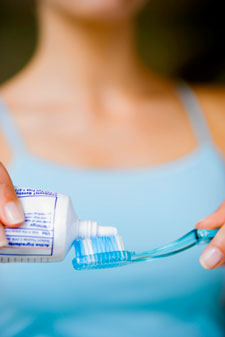Ox Hooves, Crushed Rocks and Eggshells

Today, it’s available as a gel, a powder, or a paste. You probably put it on your toothbrush without much thought. It may surprise you to learn that toothpaste is not a new invention. What is new are the ingredients that help prevent cavities, reduce sensitivity, and brighten your smile.
Here’s a brief and fascinating history of dentifrice.
The Ancients Used Toothpaste
Bad breath and stained teeth have been around as long as humans have.
It was the Egyptians who started using a paste to clean their teeth. Back in 5000 BC, even before the invention of the toothbrush, Egyptians were cleaning their teeth and gums.
The ingredients were designed to keep their gums clean, teeth white and breath fresh. These included a powder made from ox hooves, burnt eggshells, and pumice rock. The Greeks and Romans preferred more abrasive cleaning and used crushed bones and oyster shells.
Ingredients added by the Romans helped tame bad breath. They often used powdered charcoal or bark. The Chinese relied on a different palate of flavorings including ginseng, herbal mints, and even salt.
Some ancient formulations included mint, dried iris flowers, pepper, and even burnt bread. Many of these concoctions produced bleeding gums—rather than preventing them.
Innovation In The 1800s
Many of the toothpaste products that we know today got their start in the 19th century.
These versions often contained soap. In the 1850s chalk was introduced as an abrasive agent. Prior to the mid-1800s, dentifrice was usually a powder. But by 1873 a crème product was developed by Colgate, later offering it in a tube similar to today’s toothpaste tubes.
The Addition of Pharmacological Ingredients
Around the time of the First World War, fluoride was added to toothpaste. This, after it was discovered the element could help reduce the formation of dental cavities. With the advent of mass advertising and the stigma of “halitosis” was introduced. So, manufacturers added ingredients designed to reduce bad breath.
More recently, herbal toothpastes have become available. They include ingredients such as peppermint oil, myrrh and various plant extracts.
There’s edible toothpaste as well. They were created for astronauts who can’t spit in zero gravity. Down on earth, it has found a market for children learning to brush their teeth.
Today you can choose from a breathtaking variety of toothpaste and gels. They contain ingredients that make them smooth, foam and moist. Plus, they may contain fluoride, coloring, flavoring, and even sweeteners. Regardless of the ingredients in your favorite tube, the key is to use it regularly!
